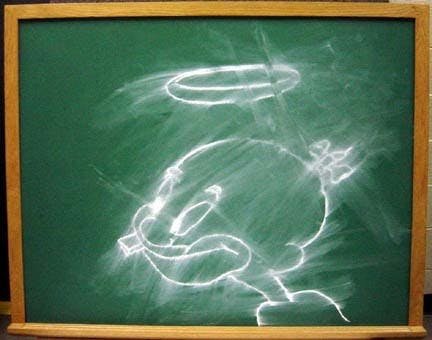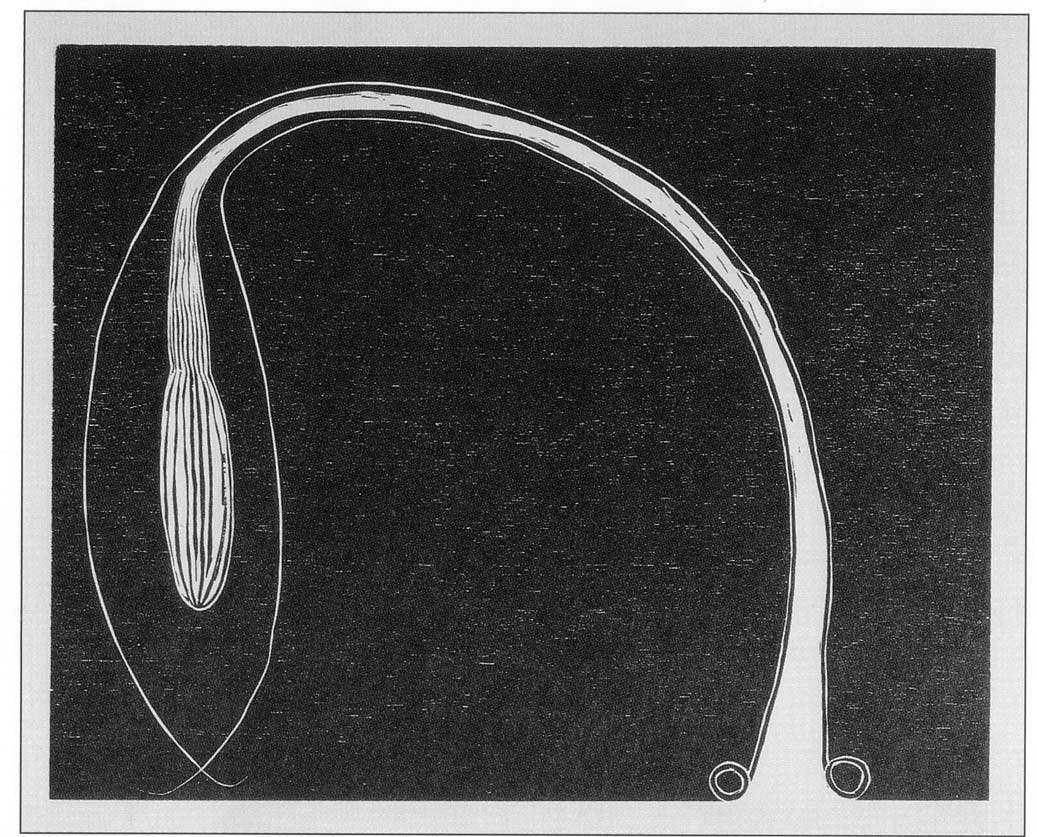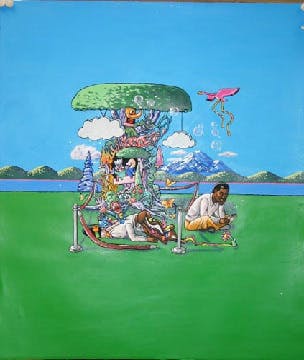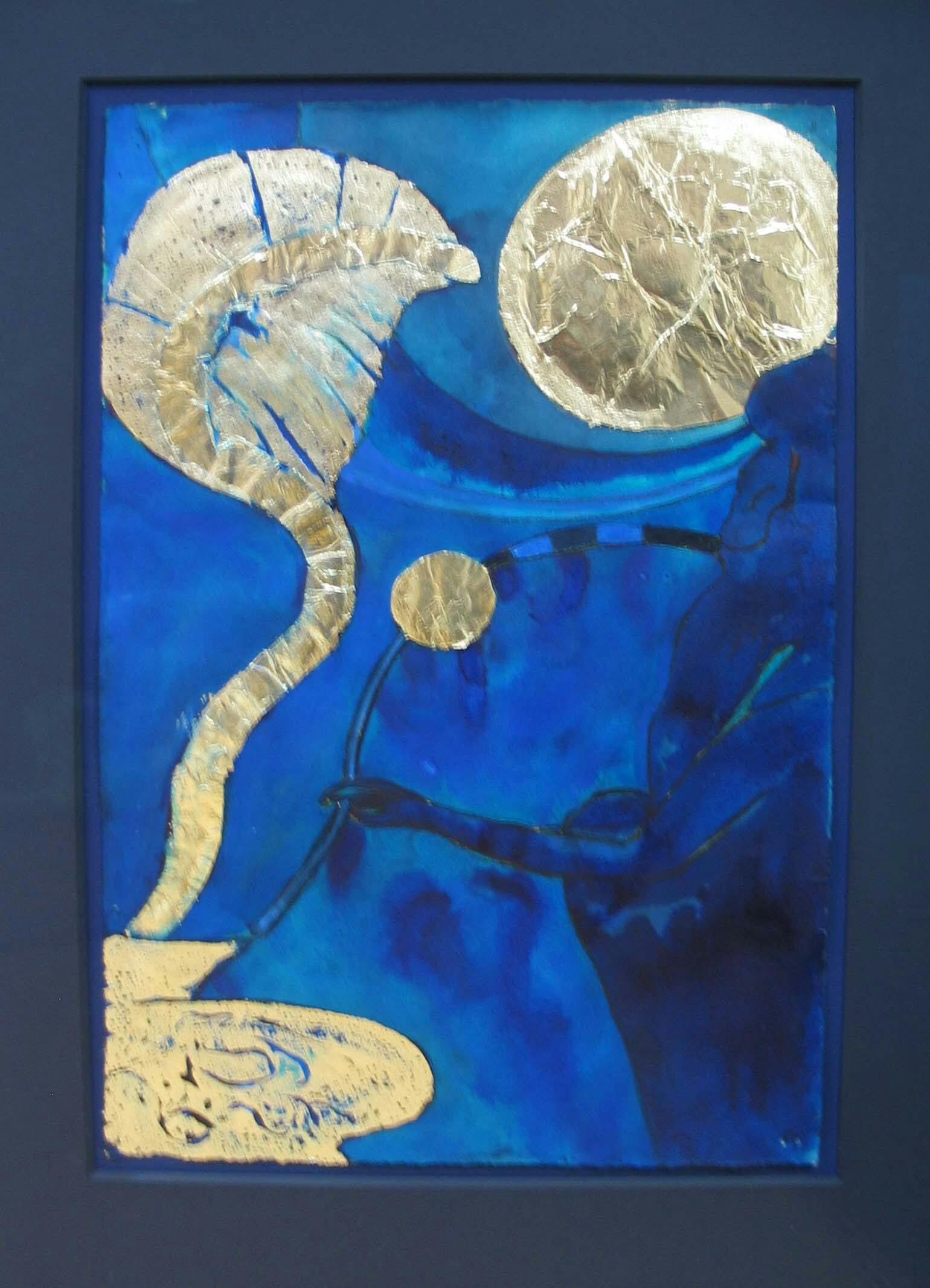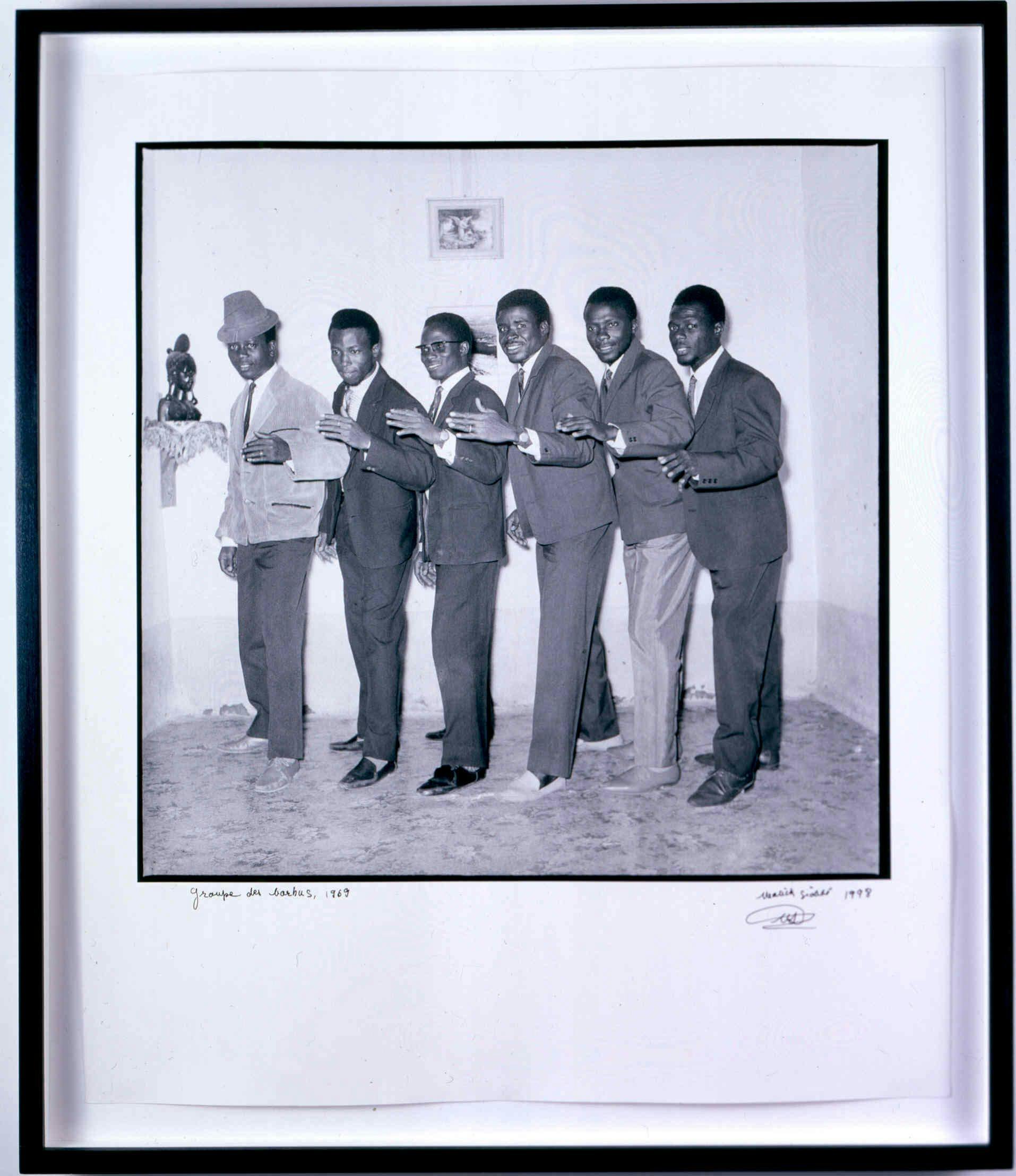Collection in Context
07.16-10.26.2008
Shortly after opening its doors to the public forty years ago, The Studio Museum in Harlem began to collect work gifted by affiliated artists and the Museum’s first donors. Today the collection of nearly two thousand objects continues to grow thanks to key acquisitions and gifts from individuals, public collections and artists. As part of an ongoing series of exhibitions of selected work from the Museum’s permanent collection, Collection in Context: Four Decades presents work in a variety of media. Organized in thematic clusters—Early Work, Recent Acquisitions, Global Exchanges, and Text and Narrative—Four Decades loosely chronicles aspects of the Museum’s collecting practices and its influence on American art, international contemporary art and Black artists worldwide.
Starting with the years immediately following the Museum’s establishment, Early Work presents work produced in the late 1960s and early 1970s—some of which was exhibited during the institution’s first years—as well as more recent work that alludes to this watershed political and art historical moment. At the other end of the Museum’s timeline, Recent Acquisitions reflects the more calculated development of the collection that began in the late 1970s, and includes acquisitions from the last five years, highlighting work by emerging artists. Four Decades also illustrates the Museum’s longstanding attention to Black artists from around the globe, as well
as its critical approach to Black culture. Global Exchanges brings together work by African and Afro-European artists who represent the global quality of the Museum’s priorities and Black culture more generally. Similarly, Text and Narrative presents the Museum’s longstanding involvement in critical and conceptual practices that take their cues from literary sources, storytelling and language-play. Four Decades is organized collaboratively by the Curatorial Team composed of Naomi Beckwith, Lauren Haynes and Thomas J. Lax.
Founded at the height of the civil rights and Black Power movements, the Studio Museum was conceived as a working space for artists and an educational and social forum in which artists and communities could view and interpret art together. Like other culturally specific, artist-run and alternative art institutions established at this moment of intense social change, the Studio Museum initially declined to establish a collections policy. Yet the desire to foster a sustained dialogue about Black culture demanded the preservation, documentation and collection of art by Black artists. In the late 1970s, the Museum launched efforts to build a collections management program that included storage facilities and the development of a new generation of collectors. Because of the relative lack of gallery representation, collectors and auction sales of African-American art during the Museum’s early years, the Museum’s process of building a permanent collection was distinctive. Unlike other institutions with collections supported by a small number of private benefactors, the Studio Museum drew from a group of individuals of relatively modest means. In the late 1980s, the Museum was able to begin setting aside funds to secure work targeted for its significance to the collection. Today the Museum’s Acquisition Committee, formed in 2001, meets three times a year to continue the legacy of assembling contemporary art and culture for future generations.
With works ranging from portraits by eighteenth-century painter Joshua Johnson to multimedia installations from recent Artist-in-Residence exhibitions, the collection demonstrates an expansive yet strategic set of priorities within the history of Black culture and international art. Areas of focus within the collection include American art and Modernism; nineteenth- and twentieth-century African, Latinx-American art; contemporary African-American, African and Caribbean art; and archival materials from artists’ records, including papers, correspondence, catalogues, books and slides. Within these areas of focus, the collection prioritizes iconic moments in Black cultural history, including the Harlem Renaissance and the Black Arts Movement, as well as work by artists who do not easily fit into historical or aesthetic categories. What remains constant, however, is the critical role the permanent collection has played in the Museum’s commitment to Black artists at different points in their careers.
Collection in Context
07.16-10.26.2008
Shortly after opening its doors to the public forty years ago, The Studio Museum in Harlem began to collect work gifted by affiliated artists and the Museum’s first donors. Today the collection of nearly two thousand objects continues to grow thanks to key acquisitions and gifts from individuals, public collections and artists. As part of an ongoing series of exhibitions of selected work from the Museum’s permanent collection, Collection in Context: Four Decades presents work in a variety of media. Organized in thematic clusters—Early Work, Recent Acquisitions, Global Exchanges, and Text and Narrative—Four Decades loosely chronicles aspects of the Museum’s collecting practices and its influence on American art, international contemporary art and Black artists worldwide.
Starting with the years immediately following the Museum’s establishment, Early Work presents work produced in the late 1960s and early 1970s—some of which was exhibited during the institution’s first years—as well as more recent work that alludes to this watershed political and art historical moment. At the other end of the Museum’s timeline, Recent Acquisitions reflects the more calculated development of the collection that began in the late 1970s, and includes acquisitions from the last five years, highlighting work by emerging artists. Four Decades also illustrates the Museum’s longstanding attention to Black artists from around the globe, as well
as its critical approach to Black culture. Global Exchanges brings together work by African and Afro-European artists who represent the global quality of the Museum’s priorities and Black culture more generally. Similarly, Text and Narrative presents the Museum’s longstanding involvement in critical and conceptual practices that take their cues from literary sources, storytelling and language-play. Four Decades is organized collaboratively by the Curatorial Team composed of Naomi Beckwith, Lauren Haynes and Thomas J. Lax.
Founded at the height of the civil rights and Black Power movements, the Studio Museum was conceived as a working space for artists and an educational and social forum in which artists and communities could view and interpret art together. Like other culturally specific, artist-run and alternative art institutions established at this moment of intense social change, the Studio Museum initially declined to establish a collections policy. Yet the desire to foster a sustained dialogue about Black culture demanded the preservation, documentation and collection of art by Black artists. In the late 1970s, the Museum launched efforts to build a collections management program that included storage facilities and the development of a new generation of collectors. Because of the relative lack of gallery representation, collectors and auction sales of African-American art during the Museum’s early years, the Museum’s process of building a permanent collection was distinctive. Unlike other institutions with collections supported by a small number of private benefactors, the Studio Museum drew from a group of individuals of relatively modest means. In the late 1980s, the Museum was able to begin setting aside funds to secure work targeted for its significance to the collection. Today the Museum’s Acquisition Committee, formed in 2001, meets three times a year to continue the legacy of assembling contemporary art and culture for future generations.
With works ranging from portraits by eighteenth-century painter Joshua Johnson to multimedia installations from recent Artist-in-Residence exhibitions, the collection demonstrates an expansive yet strategic set of priorities within the history of Black culture and international art. Areas of focus within the collection include American art and Modernism; nineteenth- and twentieth-century African, Latinx-American art; contemporary African-American, African and Caribbean art; and archival materials from artists’ records, including papers, correspondence, catalogues, books and slides. Within these areas of focus, the collection prioritizes iconic moments in Black cultural history, including the Harlem Renaissance and the Black Arts Movement, as well as work by artists who do not easily fit into historical or aesthetic categories. What remains constant, however, is the critical role the permanent collection has played in the Museum’s commitment to Black artists at different points in their careers.
